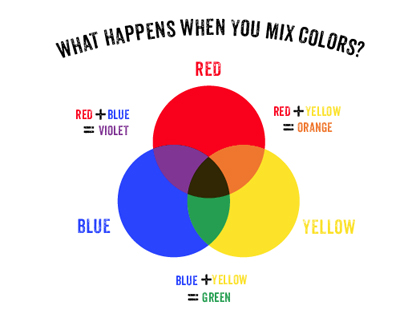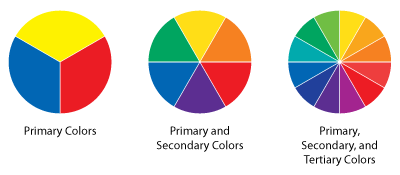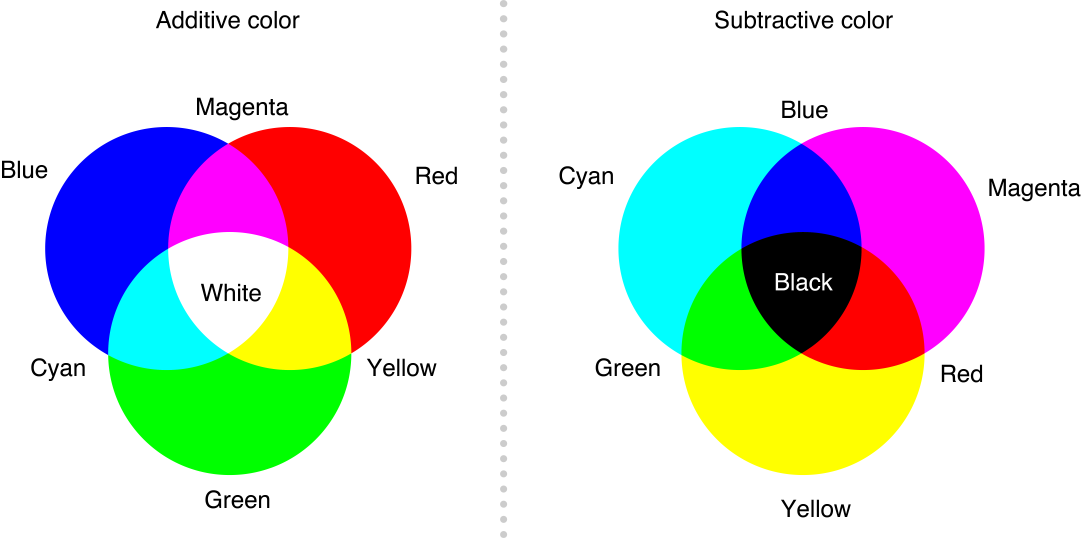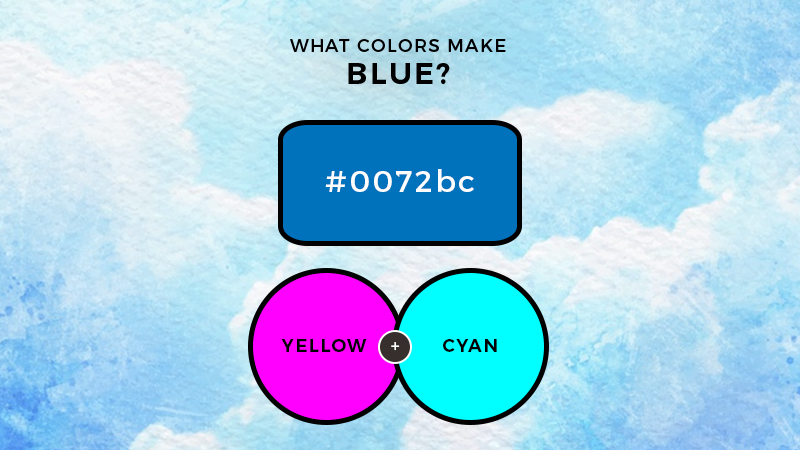What Colors Make Blue? What Two Colors Make Blue
In this article, we share with you what colors make blue. You’re probably wondering what two colors make blue.
Are you a painter trying to explore your color palette? Maybe you’re a make-up artist and you’re trying to make different hues with what you have.
Either way, we will educate you on the concept of mixing colors, and share that what you’ve been taught has been wrong!
Keep reading…
Do you remember when you were in elementary school and you got your first watercolor paint palette? You were so excited to paint your first masterpiece during arts and crafts time.
You might remember your teacher explaining how colors work. She probably had a color wheel or chart that explained the three primary colors.
Your teacher explained that these primary colors cannot be made by mixing other colors.
The primary colors are red, yellow, and blue.
But wait, if Blue is a primary color… we should not be able to mix colors to create it… right?
Actually, that is incorrect…
Because in fact, you can make blue by mixing two colors.
I’m going to share with you what 2 colors make blue, but before I do let me help you understand why you’ve been miseducated.
Primary Color Model (Red, Yellow, Blue)
Here is a picture of the three primary colors red, yellow and blue.
As you can see from this chart, when you mix the colors red and yellow you get orange.
When you mix the colors yellow and blue you get green.
And lastly, when you mix the color red and blue you get violet (or purple).
The new colors: Purple, orange and green are called Secondary Colors. Thus you have primary and secondary colors now.
But, there are also “Tertiary Colors” which is the third set of hues. This is also known as intermediate colors. You can achieve these colors by mixing the adjacent primary and secondary hues together.
Please review the chart below as it will help you get a better understanding of these color charts.
As you can see by these basic color wheel diagrams that as you mix colors that are next to each other you get more colors and that’s how we get a wide spectrum of colors.
You can also go many more layers down by continuing to mix colors, but I don’t want to overcomplicate things.
But this still doesn’t explain how you can make blue by mixing colors.
This next section solves the puzzle…
CMY Color Model (Cyan, Magenta, Yellow)
Have you ever had to buy ink for your printer? Have you noticed that they don’t sell you simple colors like blue, red, and yellow? Instead, they sell you colors named CYM or RGB.
This is to help improve the quality and accuracy of colors when printed. By mixing a certain volume of each of these colors you can mix them to get a wide range of colors in your printing scale.
If you look at the chart below you will see Additive and Subtractive colors charts.
You can see that if you mix yellow and magenta these two colors make red!
But wait, red just like blue is a primary color!?
and we were taught that you can’t mix colors to make a primary color.
As you can see we were misled.
So why do they still teach us that red, blue, and yellow are primary colors and that they can’t be made by mixing other colors?
I can think of several reasons.
But simply…
The concept that red, yellow, and blue were primary colors started many years ago when scholars explained that there were three basic hues. People didn’t challenge these intellectuals until many years later. Just like no one challenged the idea that Earth was flat.
According to Wikipedia: Color theory was originally formulated in terms of three “primary” or “primitive” colors—red, yellow and blue (RYB)—because these colors were believed capable of mixing all other colors. This color mixing behavior had long been known to printers, dyers and painters, but these trades preferred pure pigments to primary color mixtures, because the mixtures were too dull (unsaturated).
Goethe’s color wheel from his 1810 Theory of Colours The RYB primary colors became the foundation of 18th century theories of color vision, as the fundamental sensory qualities that are blended in the perception of all physical colors and equally in the physical mixture of pigments or dyes. These theories were enhanced by 18th-century investigations of a variety of purely psychological color effects, in particular the contrast between “complementary” or opposing hues that are produced by color afterimages and in the contrasting shadows in colored light. These ideas and many personal color observations were summarized in two founding documents in color theory.
And the other reason in my opinion why were not taught about the CMY color system is that we wanted to keep things simple when teaching kindergarten kids about color and mixing paint.
As you can read about history it would simply be too overwhelming and confusing for a young child to comprehend. At that age, they just want to paint =)
What Colors Make Blue?
So I’m sure you have figured out by now that you can make the color blue by mixing two colors.
“What two colors make blue?” you might ask.
If you reference the chart above you will see that if you mix the colors Magenta and Cyan you can make BLUE!
This truly challenges everything we have been taught growing up.
Here is a video that demonstrates what colours make blue paint.
You can also make different versions of blue by adding white or black to make it lighter or darker.
This color theory works on any palette including printer ink, pen colors, makeup, clay, etc. You can test it yourself using markers.
Whether you’re trying to learn to mix paint, crayons, chalk, build a niche anime website, or just simply want to educate yourself. Learning how to make blue color can come in handy for many reasons.
Hope you enjoyed learning what two colors make blue.
Read Latest Posts

Hi, I'm Anthony Tran! Welcome to my site. I live in Arizona and am obsessed with all things related to building an Online Business and working from home. Learn about my journey here.
Follow Online






